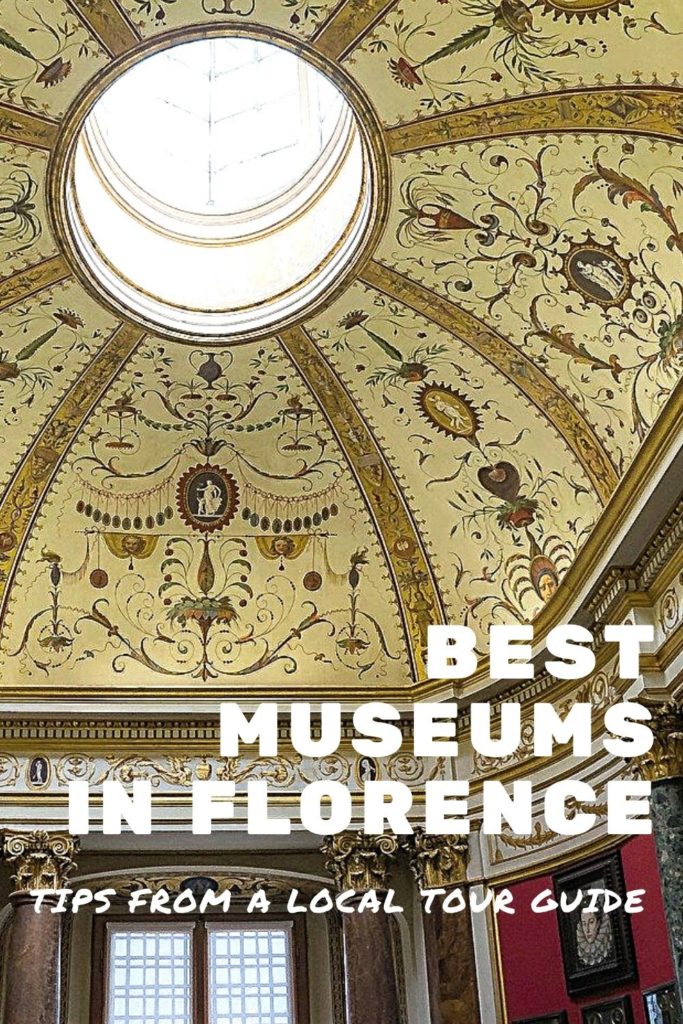Best Museums in Florence you shouldn’t miss
There are so many museums in Florence that it can be confusing and overwhelming to decide which ones to visit during your stay; that’s why I made this post about the best museums in Florence.
I know it’s just impossible to visit all of them during one trip: that’s why I am giving a general view on each one of them. Then it’s up to you to decide which ones to visit, according to the length of your stay and your taste.
I am Claudia, a licensed tour guide of Florence with over 10 years of experience. Learn more about my Florence private tours.
Keep in mind that a licensed local tour guide can really make a difference for your experience! With someone like me you won’t only get all the explanation needed to fully understand the art pieces you’ll be seeing. But you’ll also optimize your time (especially in big museums), being sure to hit all the most important masterpieces… And not spending all of your time in search of them.
Read also: things to know before going to Florence
Best museums in Florence not to miss
In this paragraph you will find all the most important museums and art galleries in Florence, the ones I recommend you visit on your first trip. I would say that the Uffizi and the Accademia Gallery are truly unmissable, you really shouldn’t skip them.
I understand that you will hardly have enough time to visit all the museums I mentioned, but you can choose the ones that interest you the most. Also, I advise you to decide which museums to visit based on the weather: Boboli Gardens and the church of Santa Croce are so hot in summer that a visit can turn into a sweaty nightmare.
In the following paragraph, instead, you will find the small museums of Florence, the less known and therefore less crowded ones.
Ah, there is a special paragraph for those churches which are also art museums, such as Santa Maria Novella and Santa Croce.
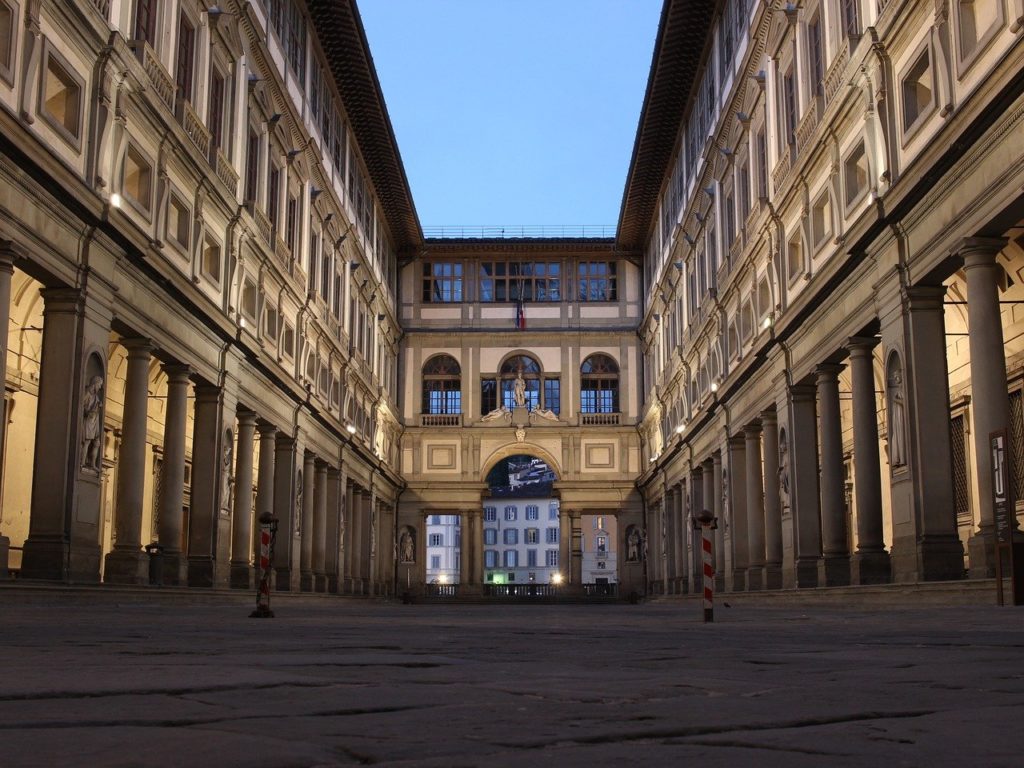
Uffizi Gallery
One of the most famous art galleries in the world, in a wonderful building from the 1500s. It’s mostly famous for the paintings of the masters of Renaissance, such as Michelangelo, Leonardo da Vinci, Raffaello and Botticelli, but the painting collection ranges from the 1200s to the 1600s. There’s also an important collection of ancient greek and roman statues. The Uffizi is probably the biggest legacy that the Medici family left to Florence.
This museum is huge and can take hours to be visited! Get ready to spend at least 2 hours there, or even more.
I always recommend to book the tickets in advance, especially in summer.
- What to see at the Uffizi (best artworks)
- Here are my 10 tips for visiting the Uffizi Gallery.
- All Botticelli’s masterpieces in Florence
If you want to take a private guided tour of the Uffizi Gallery, check my Uffizi private tour! If you instead prefer to share the visit with a small group, check those ones on Viator:
Accademia Gallery
The Accademia Gallery houses a rich collection of paintings from the Middle Ages and Renaissance; but that’s not the reason why 2 millions of people visit this museum every year. We’re all coming here for the most famous statue in the world: David by Michelangelo. The Accademia Gallery has 6 more statues made by Michelangelo: Pietà di Palestrina, Saint Matthew and the 4 Slaves (Prigioni). There is also Museum of Musical Instruments and a rich collection of plaster models from the 1800s.
The Accademia Gallery is smaller than the Uffizi and generally requires less time (most of the people stay for less than one hour, just to see David).
I even more highly recommend to book the tickets in advance, the queues can be terrible in summer!
To know more:
If you want to take a private guided tour of the Accademia Gallery, check my Accademia private tour! If you instead prefer to share the visit with a small group, check those ones on Viator:
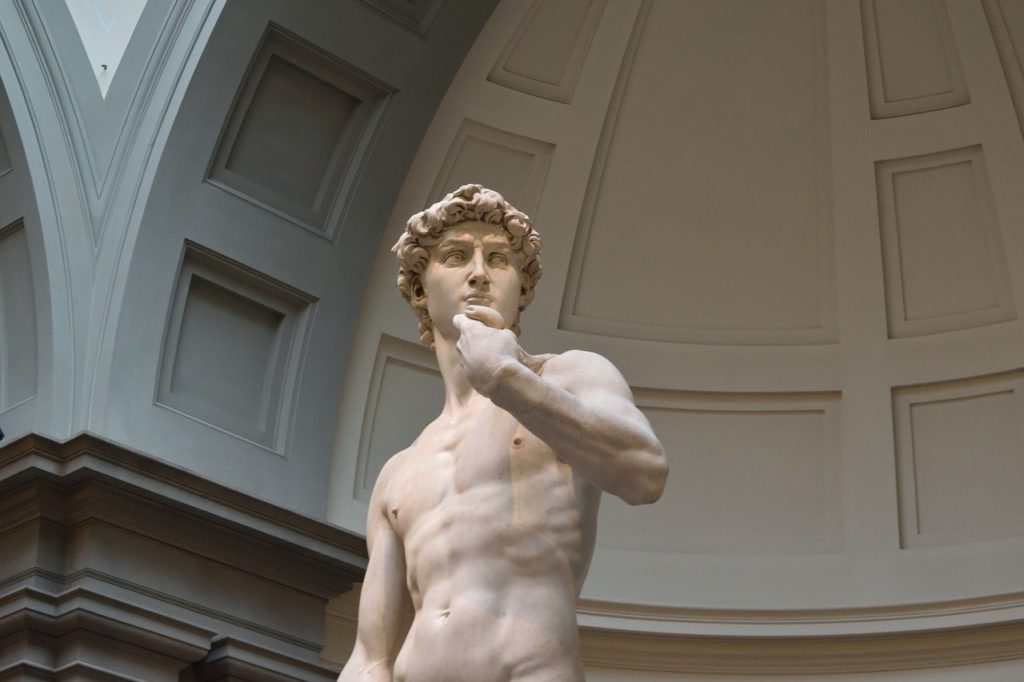
Boboli Gardens and Pitti Palace
Pitti Palace, the magnificent residence of the Medici built in the 1500s, is today a huge complex with 5 different museums: the Palatina Gallery, the Gallery of Modern Art, the Treasury of the Grand Dukes, the Gallery of Costume and Fashion, and the Imperial and Royal Apartments.
The last and more beautiful one is the Boboli Gardens, a true open air museum with nature, art and architecture.
It’s impossibile to visit all the 5 museums in one time. Personally I recommend those museums only if you are really interested in one of those subjects, and if you have loads of time. But Boboli Gardens is really unmissable for anyone!
The ticket for Boboli Gardens also include the entrance to Giardino Bardini, another beautiful garden very close to Palazzo Pitti.
- Check my Boboli Gardens Private tour or take a small group tour:
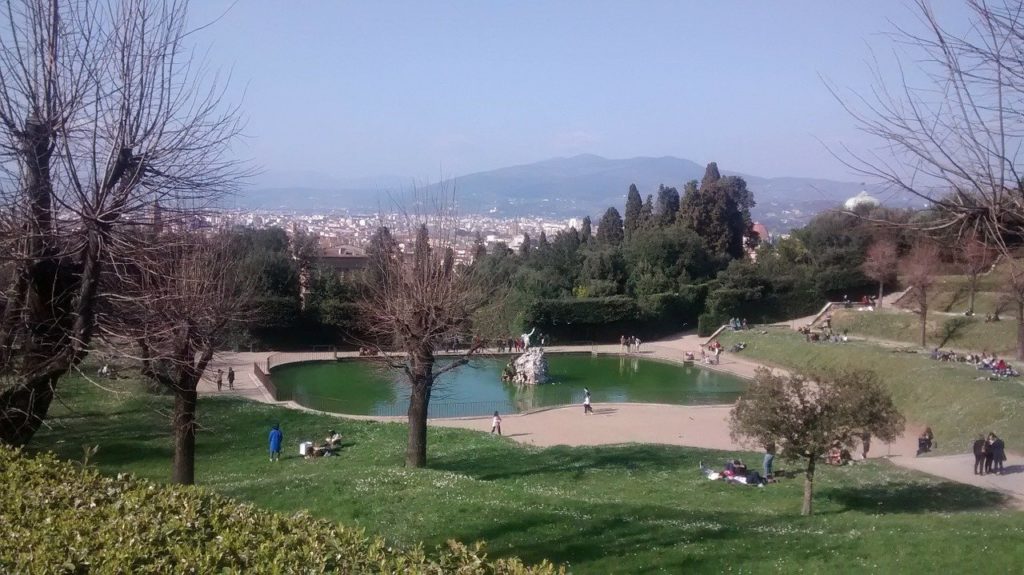
Best museums in Florence: Palazzo Vecchio
The heart of the politics of Florence since the late 1200s. Today Palazzo Vecchio is still used for the administration of the city, as it’s the town hall of Florence. But it’s also a wonderful museum, rich in frescoes, paintings and sculptures from the greatest names of Renaissance, included Michelangelo and Raffaello. My favorite rooms are the Studiolo of Francesco I and the Hall of Geographical Maps.
You can also climb the tower of Palazzo Vecchio to enjoy a wonderful view from the top!
- Here is my Palazzo Vecchio private tour (and more info about the museum and the climb to the tower)
Bargello
Built in the late 1200s, used for centuries as tribunal, prison and gallows, the Bargello is a massive stone building looking like a medieval castle, with a tall tower. Today the Bargello is the national museum of sculptures, with masterpieces by Donatello, Michelangelo, Verrocchio, and many others. If you are into Renaissance sculpture you really shouldn’t miss this one!
Remember that Bargello is only open in the morning, and unlike other national museums (that are closed on Mondays) is closed on Tuesdays.
Opera del Duomo Museum
The Museo dell’Opera del Duomo is dedicated to the making, maintaining and restoring the huge complex of the Duomo. The most famous pieces are the sculptures by Donatello, Michelangelo, Giotto and many other great names.
But you’ll also learn how Brunelleschi made the dome, seeing the original scaffoldings and tools he used, and even the wooden model he made in the 1400s. The room dedicated to the original medieval and renaissance sculptures of the facade is just amazing, also because of the architecture of the room itself.
This is definitely one of my personal favorites among the best museums of Florence!
- What about a private tour at the Opera del duomo Museum?
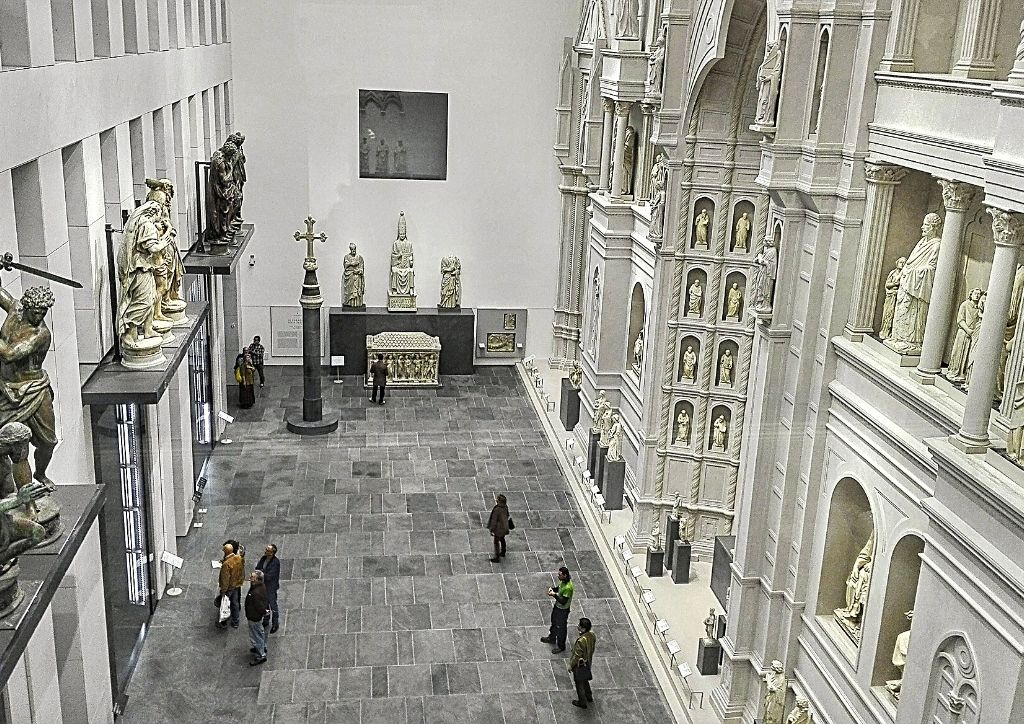
Medici Chapels
The museum of the Medici Chapels is a part of the church of San Lorenzo, and is including two different areas of the church. The first one is the New Sacristy (Sagrestia Nuova), a masterpiece of sculptures and architecture designed by Michelangelo to host the graves of Lorenzo the Magnificent and his brother Giuliano de’ Medici.
The second part is the Chapel of the Princes (Cappella dei Principi), the very last and most opulent monument the Medici made: here is where most of the members of the family are buried. The chapel is decorated with a super expensive technique of mosaics made of semi-precious stones. That technique, called commesso fiorentino, is unique, typical and exclusive of Florence: it wasn’t done anywhere else in the world.
Churches that are also museums
Both of these churches are part of two friars’ convents since the Middle Ages, and the friars still live and carry out their activities here today. But the two churches are also museums in all respects, with their very rich art collections exhibited in the halls of the convents, and with their peaceful medieval cloisters where you can stroll.
Santa Maria Novella Church
The church of Santa Maria Novella is a convent founded by Dominican Friars in 1221. The church was renovated in the XIV century, and decorated with paintings, frescos and sculptures made by the biggest names of art. Giotto, Ghirlandaio, Filippino Lippi, Botticelli, Brunelleschi, Masaccio, Paolo Uccello and much more.
The church is so rich in works of art that it also includes a museum: some of the paintings that have been removed from the church over time are displayed in some rooms of the convent. You can also visit the three beautiful medieval cloisters of the convent.
The church of Santa Maria Novella has an ancient and beautiful pharmacy, founded in 1221 and still active today.
- Find out more about the ancient apothecary of Santa Maria Novella.
- Learn more about my private Santa Maria Novella tour.
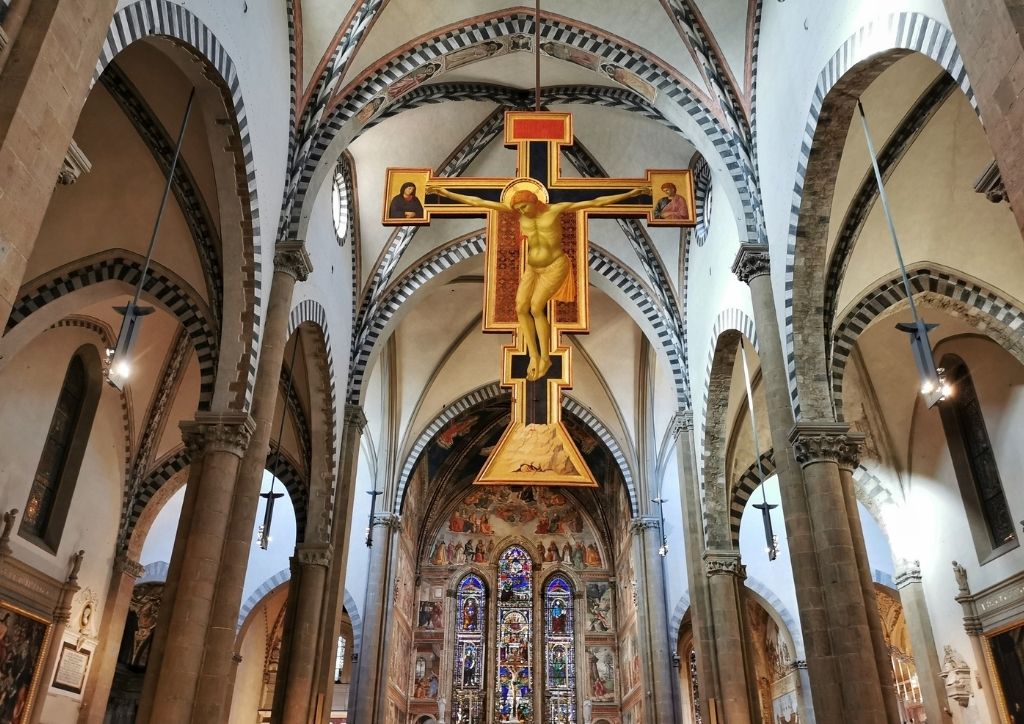
Santa Croce church
Even the church of Santa Croce is part of an ancient convent of Franciscan friars, founded in the early thirteenth century, when St. Francis was still alive, by some of his very first followers.
The current church was built starting from 1294, and is a splendid example of Italian Gothic architecture, designed by the architect Arnolfo Di Cambio. Inside there are artworks by Donatello, Giotto and his master Cimabue, Brunelleschi and many other big names of Medieval and Renaissance art.
Santa Croce is also the burial place of the most important personalities of Tuscany and Italy. In magnificent marble monuments rest Michelangelo, Galileo Galilei, Niccolò Machiavelli, Ugo Foscolo, Vincenzo Bellini…
Lesser-known and small museums in Florence
If you have a lot of time available, or perhaps you have been to Florence before and have already visited the main museums, in this paragraph you will find some ideas for other, lesser-known museums to discover.
Did you know that there are over 70 museums in town? Some of the best museums of Florence are small museums, little known and therefore not very crowded. Actually, they are often quite deserted! Especially on weekdays. Here are some of my favorites:
Opificio delle Pietre dure Museum
A small but very fascinating museum, which tells the story of a very precious and unique artistic technique, created for centuries only in Florence. I’m talking about the commesso fiorentino, a kind of mosaic of semi-precious stones (such as marble, granite, mother of pearl or lapis lazuli) cut and assembled with precision, to form images. The commesso fiorentino technique was used to decorate the Chapel of the Princes, one of the Medici Chapels, where the last members of the Medici family rest.
The museum tells the story of this artistic technique through artifacts, tools, stones and many other objects.
- Extra tip: the ticket for the Opificio delle Pietre Dure Museum is included in the entrance ticket to the Uffizi, so you can visit both museums (within 5 days from the entrance to the Uffizi) at no additional cost. More info here.
Learn more about the Opificio delle Pietre Dure Museum and my private tour of it.
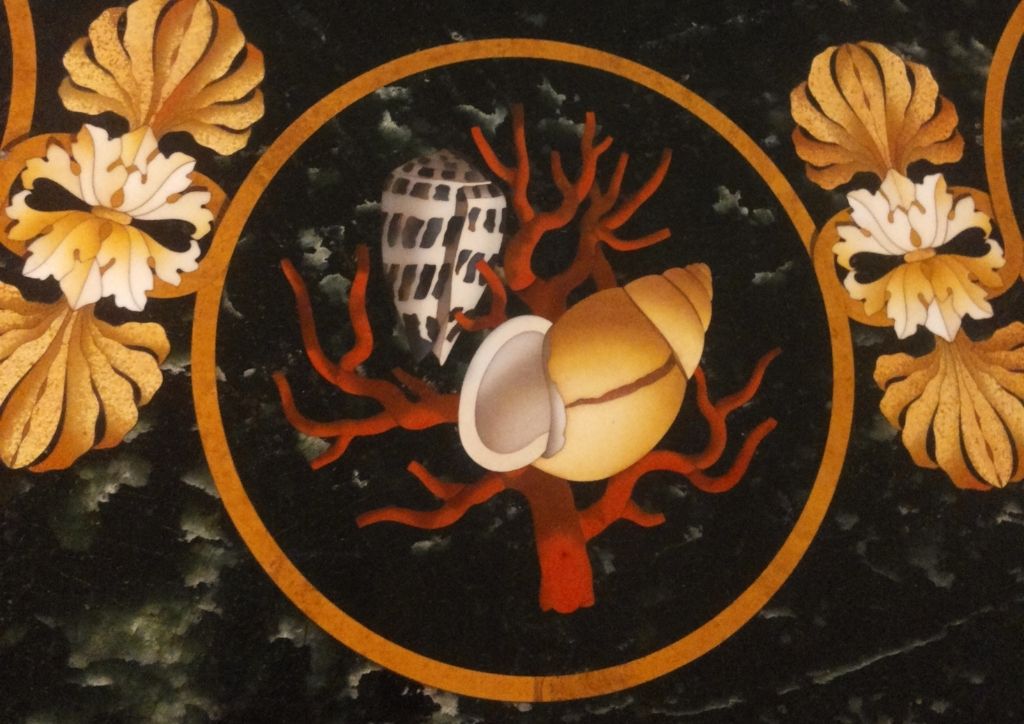
Museo Stibbert – Stibbert Museum
Frederick Stibbert, half Florentine and half English, was an art collector of the second half of the 19th century, passionate about medieval Italian art as well as oriental cultures such as Japanese. During his life he collected his countless collections in the Villa Stibbert, which looks just like a medieval castle full of wonders from the past. Today Villa Stibbert has become the Stibbert Museum. The collections include weapons and armor from all over the world, paintings, furnishings, porcelain, jewelry, fabrics, books and much more. The organization is still the original one desired by Frederick Stibbert.
- Stibbert Museum is located outside the historic center, you can get there with a bus ride of about 20 minutes (bus no. 25) from Piazza San Marco.
Museum of the Innocenti Institute
The Innocenti Institute was the very first institution in the word, specifically dedicated to children. Founded in 1419, for centuries it has welcomed children in need of help. It was not only an orphanage, but also helped families who, due to poverty, could not take care of their children, and also single mothers. The institute is still active today, and the museum tells the story of this extraordinary place through splendid works of art. Brunelleschi designed the architecture of the Innocenti Hospital, and some of the paintings were made by Botticelli and Ghirlandaio.
I am very attached to this place, because for three years I have worked as an internal tour guide of the museum, I love it and I know it very well.
Find out more about the Innocenti Museum
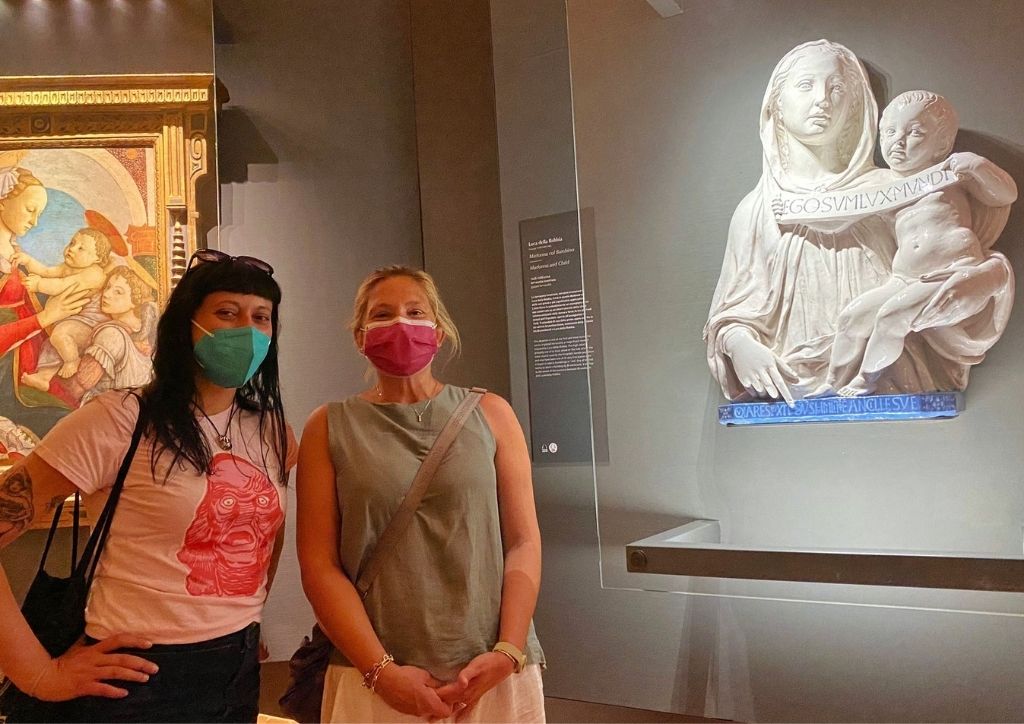
Museo di Palazzo Davanzati – Davanzati Palace museum
In an ancient palace of 1300, once belonged to a rich merchant family, we can discover the daily life of the past in Florence. There are antique furniture, precious works of art and typical medieval architecture, from the kitchen to the bedrooms. Almost all the rooms are painted with frescoes, and some graffiti have even been found on the walls dating back to the Renaissance. This museum is perfect for children too!
For information on the opening hours of Palazzo Davanzati Museum check the official website.
La Specola Museum
The oldest science museum in the world, founded in 1775, houses several scientific collections of the Natural History Museum. The zoological collection is so ancient that among its taxidermized animals there are some now extinct. Other specimen used to belonged to the Medici.
But above all, the Specola is famous for its collection of anatomical waxes from the 18th and 19th centuries, unique in the world. It is my absolute favorite museum, and I have studied the history of anatomical waxes for a long time. They are real works of art, even if their main purpose was to educate medical students.
- Currently the La Specola museum has been closed since 2019 for a major restoration. I can’t wait for it to be open again to visit it!
- Find more information and some photos in the post dedicated to La Specola Museum.
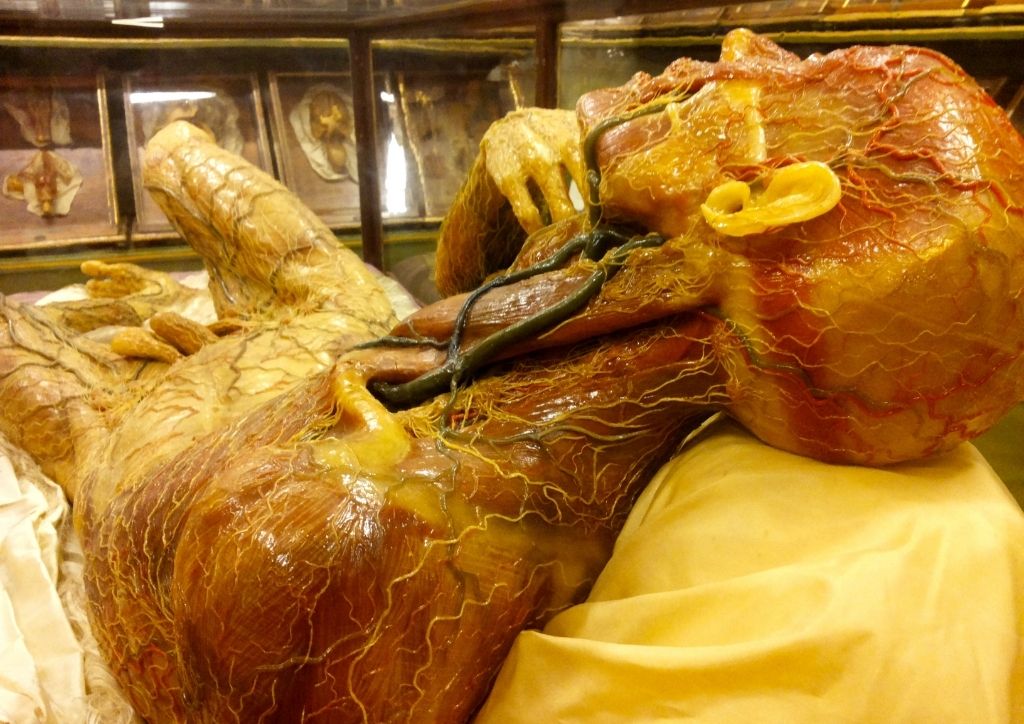
Bardini Museum
Called the blue museum due to the walls painted in deep blue, the Bardini Museum is the legacy left to the city of Florence by the art dealer Stefano Bardini at the beginning of the twentieth century. Bardini specialized in medieval and early Renaissance art: the museum displays paintings and sculptures by great names in art such as Donatello, Pollaiolo, Tintoretto and Andrea della Robbia.
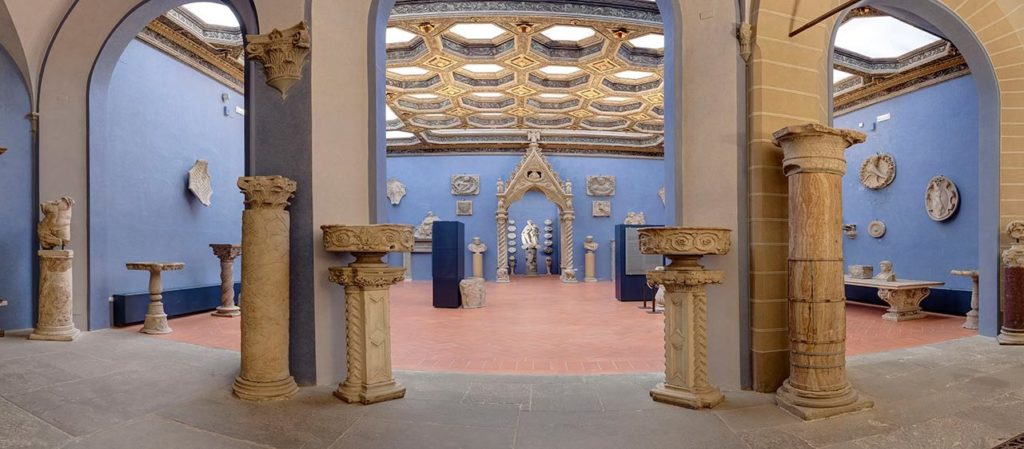
I hope you fund this information useful! Have you already chosen which one of the best museums of Florence to visit during your vacation?
Also read my tips for planning a travel to Florence
